Dew.
 ‘Dew’ is one of seven poems written by Yorkshire poet, Simon Armitage, and carved in stone by artist, Pip Hall.
‘Dew’ is one of seven poems written by Yorkshire poet, Simon Armitage, and carved in stone by artist, Pip Hall.
The poems – all dedicated to the element of water – are carved on local rock and located on hill and moorland in the South Pennines area of Yorkshire. Six of the stones are publicly accessible in identifiable locations, but the seventh, bearing the simple inscription, ‘In memory of water’, is yet to be found.
This article is about one of the seven – The ‘Dew Stones’ – not far from my own home.
Images: all photographs taken by me.
 The Path to the ‘Dew Stones’
The Path to the ‘Dew Stones’
The path to the ‘Dew Stones’ is through a pine wood – as black and silent as anything from a Grimm’s Fairy Tale.
The Dew Stones
Dew. That word evokes the freshness of a summer’s dawn. But the day I made my visit the skies were leaden and the view of Keighley in the river valley below obscured by thick waves of mist.
 I found the Dew Stones, high on Rivock Edge, by crossing two fields – both thick with mud – and into and along a commercial pine wood, black and silent, as if the trees, and all its wild life, could sense their eventual fate.
I found the Dew Stones, high on Rivock Edge, by crossing two fields – both thick with mud – and into and along a commercial pine wood, black and silent, as if the trees, and all its wild life, could sense their eventual fate.
Ten minutes along the path and daylight breaks into the wood through a clearing, and there they stand, either side of a gap in the wall. The rock once whole, has now been riven in two, ground smooth, and stands, limbs akimbo, like the pages of a huge open book.
The stones are separated by a gap revealing the rolling landscape beyond, which falls away into the distance across the River Aire valley. The poem is broken into two stanzas, one on each slab.The marks of the wedges used to split the stone are clearly seen and mirror each other across the gap.
The stones have been in place for nearly two years and already are blending with the dry stone wall on either side. Two Yorkshire winters have scoured away at its freshness; algae and the grey patina of age now mark its surface. It is easy to imagine it slowly changing and merging with the landscape with each passing year.
The poem ‘Dew’ is a memory and evocation of dawn. Simon Armitage, the poet, has written that he sees dew “…as a peace-maker or emollient, especially at the end of those old-fashioned summers when the moors seemed ready to erupt into fire at the slightest spark or wrong word” (from the book, ‘In Memory of Water’, 2013).
This poem in stone is part of a tradition of Man making its cultural mark on the landscape. There are over 300 examples of Bronze Age rock markings on rocks scattered across the moors near the Dew Stones. The meaning of the Bronze Age markings have been lost in time.
Perhaps a future people in the Fifth Millennium will puzzle over these poems, too. ‘I wonder what the Dew was like’, they might say. Or perhaps even, ‘why did people write poems then?’
The ‘Dew Stones’
‘Dew’ by Simon Armitage
 The ‘Dew’ poem, shown opposite, along with the other Stanza Stones poems can be found in the book by Simon Armitage
The ‘Dew’ poem, shown opposite, along with the other Stanza Stones poems can be found in the book by Simon Armitage
(See the book recommendation below).
Simon Armitage has written that he wanted to “…evoke the still and jewelled dawn, when the battles of the previous day and the terrors of the night have been soothed or eased by morning dew.”
I particularly liked the images of the barbed wire trimmed with ‘liquid gems’ and the ‘trembling eye’ of dew in the last line.
There is a crisp edginess to the poem that I like too, with its tension between the ‘touchy’ dryness of the land and brief cooling refreshment of the dew.
Tradition
 The Stanza Stones form a link with other attempts by Man to leave his cultural mark on the landscape. On the moors around the Dew Stones are hundreds of Bronze Age rock carvings (see example, right).
The Stanza Stones form a link with other attempts by Man to leave his cultural mark on the landscape. On the moors around the Dew Stones are hundreds of Bronze Age rock carvings (see example, right).
The meanings of these images are yet to be fully understood. Maybe people in 5000 years time will puzzle over the words of the poems.
Will poetry survive 5000 years of passing time?
The Stanza Stones Project
The Stanza Stones project was an initiative in 2010 by the Ilkley Literary Festival to commemorate the London 2012 Olympic Games. Lottery Funding was obtained, Arts Council support gained, and poet, Simon Armitage, and stone artist, Pip Hall, commissioned to respectively write and carve the poems.
The poems have inspired other creative development in the area (see the short film, link below).
- Stanza Stones
A short 12 minute film looking at the background to the project and how it has inspired literary and artistic development in the area.
 Poetry Trail Guide
Poetry Trail Guide
Ilkley Literature Festival has produced a free walking guide to help people find the stones.
Go to the link below to download your own copy.
‘Dew’ – wood engraving
The wood engraving shown below is by Hilary Paynter and one of seven in the book, In Memory of Water, with poems by Simon Armitage, published by Andrew Moorhouse in 2013. The book contains all the Stanza Stone poems, as well as Hilary Paynter’s beautiful engravings.
The engraving depicts the dark surrounding trees on the approach to the stones; pine leaves are in the foreground. The central view is an impression of the landscape between and beyond the two Dew Stones.

The remaining six engravings are shown in the photo slideshow below.
Stanza Stones: wood engravings
- Woodbine Books, Leading Experts On Rare And Collectable Books
Woodbine Books : – Art/Architecture Designer Bindings Fine / Private Press Books Signed Books ecommerce, open source, shop, online shopping






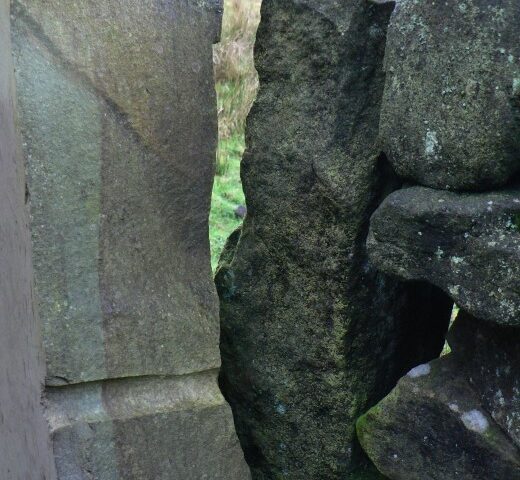
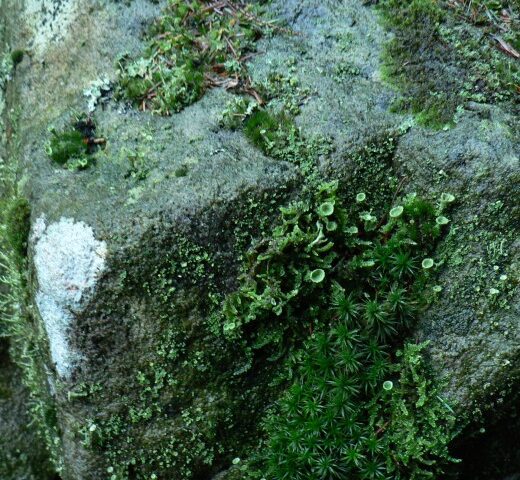

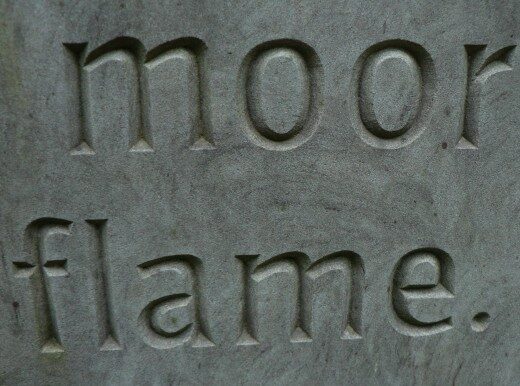



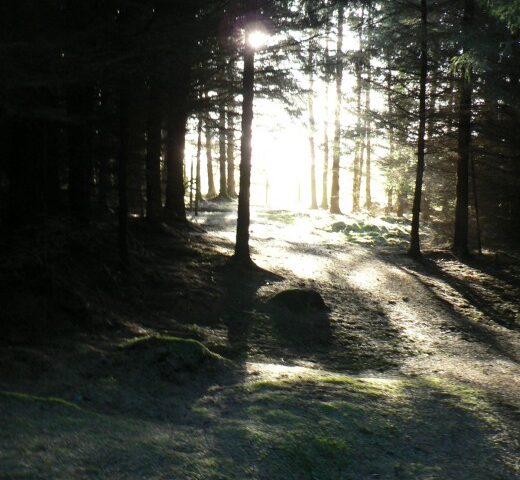
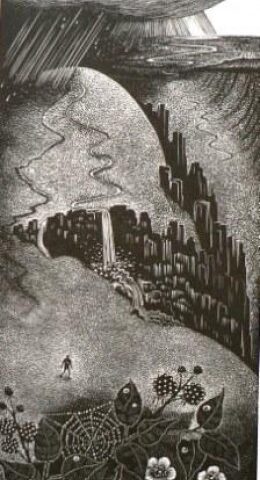
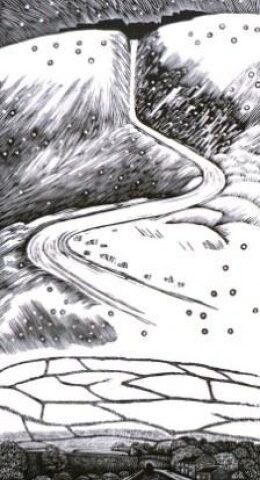

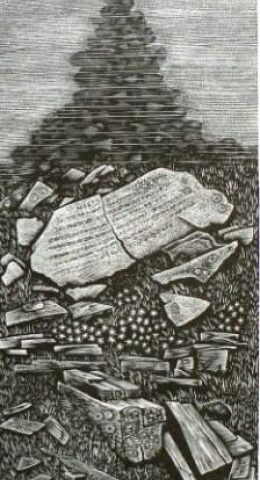
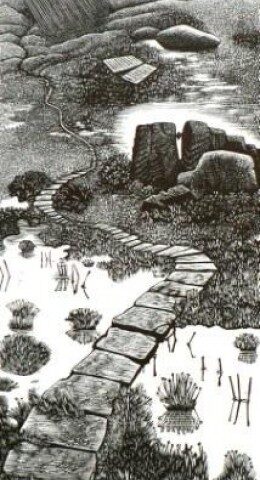
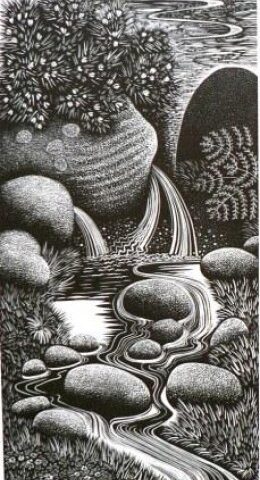

July 27, 2015
Thanks Sherry. The stones certainly awe me every time I see them, and I imagine them still there in a 100 years time: double awesome
July 26, 2015
Really awesome Colin! I am anxious to study it more! Great story!